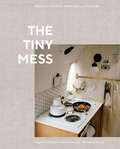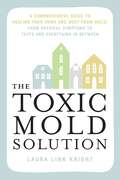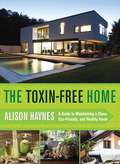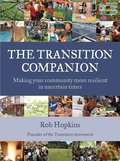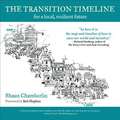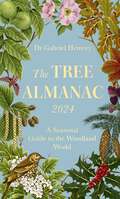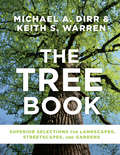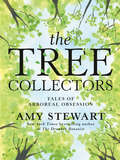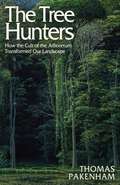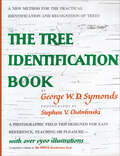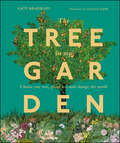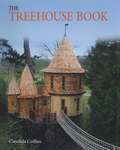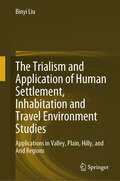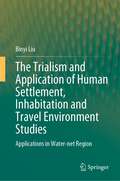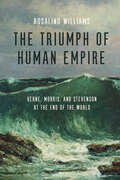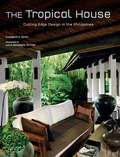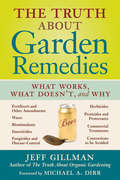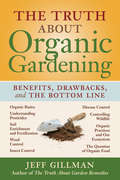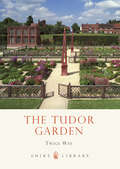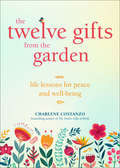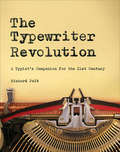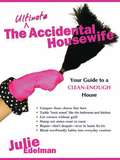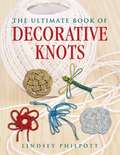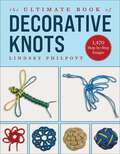- Table View
- List View
The Tiny Mess: Recipes and Stories from Small Kitchens
by Maddie Gordon Mary Gonzalez Trevor GordonA lushly photographed cookbook featuring more than 40 recipes from tiny kitchens, The Tiny Mess is a whimsical combination of stories, recipes, culinary adventure, and of course, petite and inspiring cooking spaces that prove constraints are nothing but an invitation for creativity.From sailboats and trailers, to treehouses, cottages, and converted railcars, The Tiny Mess is alive with stories of tiny houses, the people who live in them, and the meals they love the most. The book offers full-flavored recipes for kitchens of any size, featuring gorgeous photographs of intimate kitchens; the fresh, colorful food they produce; and the artisans, cooks, anglers, and farmers who own and work in them. A range of inventive dishes includes options for breakfast, lunch, dinner, and even cocktail hour, such as Sourdough Pancakes, Kitchen Sink Quiche, Nopal Cactus Salad, Slow-Stewed Rabbit Tacos, Blueberry and Lime Pie, and Rosemary-Honey Gin and Tonic. In addition to the recipes, the book includes narratives about the contributors, including their tips and tricks for essential equipment, pantry items, and small kitchen hacks.
The Toxic Mold Solution: A Comprehensive Guide to Healing Your Home and Body from Mold: From Physical Symptoms to Tests and Everything in Between
by Laura Linn KnightA Simon & Schuster eBook. Simon & Schuster has a great book for every reader.
The Toxin-Free Home: A Guide to Maintaining a Clean, Eco-Friendly, and Healthy Home
by Alison HaynesWith the amount of junk a family can amass, it seems impossible to keep a tidy home. Home Detox Handbook teaches you how to tackle every cleaning project in your home with ease, from washing stained laundry to scouring kitchen cupboards to creating your own shampoo from household ingredients. The methods presented are not just simple, they are also natural, eco-friendly replacements for store-bought, chemical-filled cleaners. And who wants to subject himself to all the chemical cleaners it takes to keep germs at bay? Alison Haynes has created a comprehensive guide to keeping your home not only sparkling, but also healthy, organized, and running efficiently. Organized by room, each chapter has easy-to-follow instructions for any household query. Here are just some of the amazing tricks Home Detox Handbook will teach you: Use lavender oil as a natural mosquito repellent. Clean and shine patent leather with petroleum jelly. Remove red wine stains from carpets with white wine and rubbing alcohol. Make an organic facial mask for oily skin using ingredients from your fridge. Recycle soap scraps into a whole new cleaner. And many more squeaky-clean tips! With 200 color photographs and step-by-step instructions, Home Detox Handbook is your one-stop resource for eco- and child-friendly solutions to your cleaning needs. From cleaning hardwood floors to getting gum out of hair to reviving limp flowers, this book will help you keep all corners of your home in its best shape. It’s a must-have for anyone managing a household or living on their own for the first time.
The Transition Companion
by Rob HopkinsIn this illustrated resource for general readers, Hopkins, founder of the UK'S Transition Movement, advocates a grassroots, community-led response to climate change and oil dependence. The first part of the book explains the rationale behind the need for a new paradigm for communities, reviewing the current and future consequences of oil dependence, climate change, and economic problems, and describes the transition movement's vision for revived communities. The book then describes real initiatives that work for lower energy use, ecological sustainability, and reliance on local economies. Hopkins gives advice on how to start and maintain a transition initiative, covering ingredients for success such as respectful communication, running effective meetings, forming a legal entity, starting local food initiatives, encouraging entrepreneurship, and using less energy. The book's color layout includes color photos and color-coded sections. Annotation ©2012 Book News, Inc. , Portland, OR (booknews. com)
The Transition Timeline: For a Local, Resilient Future
by Shaun ChamberlinThe Transition Timeline lightens the fear of our uncertain future, providing a map of what we are facing and the different pathways available to us. It describes four possible scenarios for the UK and world over the next twenty years, ranging from Denial, in which we reap the consequences of failing to acknowledge and respond to our environmental challenges, to the Transition Vision, in which we shift our cultural assumptions to fit our circumstances and move into a more fulfilling, lowerenergy world. The practical, realistic details of this Transition Vision are examined in depth, covering key areas such as food, energy, demographics, transport and healthcare, and they provide a sense of context for communities working towards a thriving future. The book also provides a detailed and accessible update on climate change and peak oil and the interactions between them, including their impacts in the UK, present and future. Use it. Choose your path, and then make that future real with your actions, individually and with your community. As Rob Hopkins outlines in his foreword, there is a rapidlyspreading movement addressing these challenges, and it needs you.
The Tree Almanac 2024: A Seasonal Guide to the Woodland World
by Dr. Gabriel HemeryA wondrous seasonal journey through Britain and Ireland's trees.Uncover the majesty and minutiae of the arboreal world in forest scientist Dr Gabriel Hemery's illustrated month-by-month guide - including tree folklore and traditions, recipes and crafts, key dates, curiosities to spot, notes on wildlife and scientific marvels from the trees that surround us.From bare branches to budbursts, the first leaves to the first blossom and the great autumn colour-change, the Tree Almanac celebrates with joyous detail all that trees give us - whether ancient or urban - and inspires us to reconnect with nature. Foreword by Tracy Chevalier.
The Tree Book: Superior Selections for Landscapes, Streetscapes, and Gardens
by Michael A. Dirr Keith S. Warren“A boon to all those who plant, care for, and love trees.”—Nina Bassuk, author of Trees in the Urban Landscape The Tree Book is the go-to reference to more than 2,400 species and cultivars, from two of the biggest names in horticulture—Michael A. Dirr and Keith S. Warren. The featured trees include those widely available in the nursery trade, some new and promising choices, and a selection of overlooked options that deserve renewed interest. Each tree profile includes the common and botanical names along with details on foliage; flowers, seeds, fruits, and cones; native range; adaptability; and popular uses in landscapes. The Tree Book is a must-have resource for landscapes architects, city foresters, horticulturists, and enthusiastic home gardeners.
The Tree Collectors: Tales of Arboreal Obsession
by Amy StewartFifty vignettes of remarkable people whose lives have been transformed by their obsessive passion for trees—written and charmingly illustrated by the New York Times bestselling author of The Drunken Botanist&“I love everything Amy Stewart has ever created, but this book is my favorite yet. I&’m giving this book to everyone I know. Because it, like its subject, is a gift.&”—Elizabeth Gilbert, author of Eat Pray LoveWhen Amy Stewart discovered a community of tree collectors, she expected to meet horticultural fanatics driven to plant every species of oak or maple. But she also discovered that the urge to collect trees springs from something deeper and more profound: a longing for community, a vision for the future, or a path to healing and reconciliation. In this slyly humorous, informative, often poignant volume, Stewart brings us captivating stories of people who spend their lives in pursuit of rare and wonderful trees and are transformed in the process. Vivian Keh has forged a connection to her Korean elders through her persimmon orchard. The former poet laureate W. S. Merwin planted a tree almost every day for more than three decades, until he had turned a barren estate into a palm sanctuary. And Joe Hamilton cultivates pines on land passed down to him by his once-enslaved great-grandfather, building a legacy for the future.Stewart populates this lively compendium with her own hand-drawn watercolor portraits of these extraordinary people and their trees, interspersed with side trips to investigate famous tree collections, arboreal glossaries, and even tips for &“unauthorized&” forestry. This book is a stunning tribute to a devoted group of nature lovers making their lives—and the world—more beautiful, one tree at a time.
The Tree Hunters: How the Cult of the Arboretum Transformed Our Landscape
by Thomas PakenhamFor centuries, English country gentlemen had collected exotic pictures for their saloons and rare books for their libraries. By the end of the seventeenth century, they had begun to collect trees. Within the space of a few years, hundreds of new specimen trees enriched the British landscape, and demand was high for the most splendid imports: maples and tulip trees from the American colonies, cypresses and cedars from Europe and Lebanon, and oriental plane from Greece and Turkey, with its romantic associations with Plato's Academy.How did these extraordinary trees make their way to the gardens of Britain and Ireland? Who were the scholars and daredevils who combed the new and old worlds in search of green treasure? What crimes did they commit, and what price did they pay to bring the world's charismatic megaflora to the gardens of home?In this exuberant history, Thomas Pakenham reveals the marvellous tales of adventure, discovery, rivalry, and passion that created the modern British landscape.
The Tree Identification Book
by George W. SymondsThe classic easy-reference field guide with more than 1500 photographs: &“An almost foolproof practical reference book.&” —Kirkus Reviews (starred review) This useful book for botanists, horticulturists, and nature lovers is made up of two parts: Pictorial Keys and Master Pages. The Keys are designed for easy visual comparison of details that look alike, narrowing the identification of a tree to one of a small group—the family or genus. Then, in the Master Pages, the species of the tree is determined, with similar details placed together to highlight differences within the family group, thus eliminating all other possibilities. All of the more than 1500 photographs were made specifically for use in this book and were taken either in the field or of carefully collected specimens. Where possible, details such as leaves, fruit, etc., appear in actual size, or in the same scale.
The Tree in My Garden: Discover the Difference One Tree Can Make - Then Plant Your Own
by DKOne tree, in one garden. Can it really make a difference?In RHS The Tree in My Garden, award-winning wildlife author Kate Bradbury reveals the amazing effect planting a single tree in your garden can have - and dares to imagine what would happen if every gardener up and down the country did the same. Combining practical gardening advice, eye-opening scientific research, reflections on the cultural importance of different species, and evocative accounts of how vital trees are for countless different forms of wildlife, this book will leave you in no doubt that every garden needs a tree!This terrific tree book features a directory of 50 key species, each one beautifully illustrated by Lucille Clerc and packed with information about each tree's appearance, care needs, carbon sequestration ability, and the wildlife it supports - to help you choose the best tree for your own garden, or learn more about the trees you may already have. Dive into the pages of this tree identification book to discover: - 50 illustrated profiles of a wide range of trees suitable for different gardens and preferences- Interesting anecdotes about history and folklore associated with the tree.- Eye-opening accounts of the importance of trees for our planet, our wildlife, and ourselves- Essential practical information to help readers choose, plant, prune, and care for their tree- Ideas for making your own leafmould and ways to get involved in community planting projects.- Stunning illustrations by Lucille Clerc that convey the beauty and the mystery of treesThis book is perfect for anyone wanting to attract more wildlife to their garden! So whether you&’re an environmentalist intent on reducing your carbon footprint, a budding gardener looking to choose the best tree for your outdoor space or you&’re simply seeking a guide about the natural history of the trees in your garden, RHS The Tree In My Garden is something the whole family can explore, discover and love. No garden should be without a tree. Plant one, watch it grow - and become part of something bigger!
The Treehouse Book
by Candida CollinsThe Treehouse Book is a global round-up of the best in modern treehouse living. Tree houses have come of age. The image of a few planks nailed into the branches of a tree has changed into a new generation of specially designed and built structures, suitable as a playhouse, a study, or even a guestroom. Totally inhabitable and filled with designer furniture, plumbing, and electronic wizardry, the twenty tree houses featured in this book are to be admired, dreamed about, and even built. Featuring spectacular photography of exteriors set up among the trees, and interior shots that offer design ideas for living the &“high&” life, The Treehouse Book offers a fairy tale castle, a thatched cottage, a complete hotel, and much more. Each project was designed using computer technology and built using sustainable materials to create structures that only seem like fantasy. Each is cleverly fitted to the chosen trees, avoiding long-term damage to these remarkable structures. With a section on plans and building techniques to help the competent reader design and build a fabulous tree house for him or herself, The Treehouse Book will inspire everyone to dream about what life would be like leaving all cares and worries behind and below. From basic cabins suspended in the trees, to the unbelievable "High-Tech Hideaway," The Treehouse Book may inspire us to commission the retreat of our dreams ... or to get out the hammer and nails!
The Trialism and Application of Human Settlement, Inhabitation and Travel Environment Studies: Applications in Valley, Plain, Hilly, and Arid Regions
by Binyi LiuThis book studies human settlements in China in terms of Human Settlements Trialism in 4 typical human settlement types: valley, plain, hilly, and arid regions. Focusing on three elements of Trialism — (1) natural and constructed environments, resources, and visual landscapes in human settlements background; (2) survival strategies, customs, culture, and values in human settlements activity; and (3) the layout of time and space as well as the planning and design of the urban, the country, and the wilderness in human settlements construction — the book analyzes the evolution of human settlements and predicts future trends. Presenting academic researchers and graduate students in various fields with insights from landscape architecture, urban planning, architecture, geography, forestry, art, and psychology, the book discusses the principles of interactive physiological thinking and systematically theoretical philosophy related to professional physiology, planning and design principles, and traditional and modern methods and technologies in urban and rural construction. The innovative multi-discipline book promotes the planning and design of five types of human settlement, which is helpful to the judgment of value, activity rule, and living style of human settlements, and also discusses the development of human settlements in the new millennium.
The Trialism and Application of Human Settlement, Inhabitation and Travel Environment Studies: Applications in Water-net Region
by Binyi LiuThis book studies human settlements in China in terms of Human Settlements Trialism in 5 typical human settlement types: river valleys, water networks, hills, plains, and arid areas. Focusing on 3 elements of Trialism—(1) natural and constructed environments, resources, and visual landscapes in human settlements background; (2) survival strategies, customs, culture, and values in human settlements activity; and (3) the layout of time and space as well as the planning and design of the urban, the country, and the wilderness in human settlements construction—the book analyzes the evolution of human settlements and predicts future trends. Presenting academic researchers and graduate students in various fields with insights from landscape architecture, urban planning, architecture, geography, forestry, art, and psychology, the study discusses the principles of interactive physiological thinking and systematically theoretical philosophy related to professional physiology, planning and design principles, and traditional and modern methods and technologies in urban and rural construction. The innovative multi-discipline study promotes the planning and design of 5 types of human settlement, which is helpful to the judgment of value, activity rule, and living style of human settlements, and also discusses the development of human settlements in the new millennium.
The Triumph of Human Empire: Verne, Morris, and Stevenson at the End of the World
by Rosalind WilliamsIn the early 1600s, in a haunting tale titled New Atlantis, Sir Francis Bacon imagined the discovery of an uncharted island. This island was home to the descendants of the lost realm of Atlantis, who had organized themselves to seek "the knowledge of Causes, and secret motions of things; and the enlarging of the bounds of Human Empire, to the effecting of all things possible. " Bacon's make-believe island was not an empire in the usual sense, marked by territorial control; instead, it was the center of a vast general expansion of human knowledge and power. Rosalind Williams uses Bacon's island as a jumping-off point to explore the overarching historical event of our time: the rise and triumph of human empire, the apotheosis of the modern ambition to increase knowledge and power in order to achieve world domination. Confronting an intensely humanized world was a singular event of consciousness, which Williams explores through the lives and works of three writers of the late nineteenth century: Jules Verne, William Morris, and Robert Louis Stevenson. As the century drew to a close, these writers were unhappy with the direction in which their world seemed to be headed and worried that organized humanity would use knowledge and power for unworthy ends. In response, Williams shows, each engaged in a lifelong quest to make a home in the midst of human empire, to transcend it, and most of all to understand it. They accomplished this first by taking to the water: in life and in art, the transition from land to water offered them release from the condition of human domination. At the same time, each writer transformed his world by exploring the literary boundary between realism and romance. Williams shows how Verne, Morris, and Stevenson experimented with romance and fantasy and how these traditions allowed them to express their growing awareness of the need for a new relationship between humans and Earth. The Triumph of Human Empire shows that for these writers and their readers romance was an exceptionally powerful way of grappling with the political, technical, and environmental situations of modernity. As environmental consciousness rises in our time, along with evidence that our seeming control over nature is pathological and unpredictable, Williams's history is one that speaks very much to the present.
The Tropical House
by Elizabeth Reyes Luca Invernizzi Tettoni"The Tropical House celebrates a growing trend toward stylish globalization in interior design. More than 25 stunning houses and condos comprise a synthesis of East-West trends and contemporary furnishings--as Filipino designers merge sleek modernist furniture with local designers' "soulful creations" in natural hardwoods and other tropical materials.Over 250 full-color photographs of outstanding Filipino residences will inspire readers with their diverse and contemporary looks. From vintage glamour to classic modern with bold artful accents, to the clean, glam look known as "contemporary chic," this book showcases the myriad tastes of the Philippines.
The Truth About Garden Remedies: What Works, What Doesn't & Why
by Jeff GillmanCan beer make plants grow? How about buttermilk? Or music—classical or rock? Are you sure about planting trees in deep holes? And how about chasing insects with hot sauce and stopping slugs with eggshells? Whether in ancient books, on television, or in gardening publications, remedies for all your garden woes are here for the taking: the challenge is to know what will work and what won't. Fearlessly conducting original experiments and harvesting wisdom from the scientific literature, horticulturalist Jeff Gillman assesses new and historic advice and reveals the how and why‚ and sometimes the why not‚ for more than 100 common and uncommon gardening practices. The results will surprise even experienced gardeners.
The Truth About Organic Gardening: Benefits, Drawnbacks, and the Bottom Line
by Jeff GillmanGardeners tend to assume that any organic product is automatically safe for humans and beneficial to the environment—and in most cases this is true. The problem, as Jeff Gillman points out in this fascinating, well-researched book, is that it is not always true, and the exceptions to the rule can pose a significant threat to human health. To cite just one example, animal manures in compost can be a source of harmful E. coli contamination if imporperly treated. Gillman's contention is that all gardening products and practices—organic and synthetic—need to be examined on a case-by-case basis to determine both whether they are safe and whether they accomplish the task for which they are intended.Ultimately, Gillman concludes, organic methods are preferable in most situations that gardeners are likely to encounter. After reading this eye-opening book, you will understand why, and why knowledge is the gardener's most important tool.
The Tudor Garden
by Twigs WayContrived, colourful, and cultured, the garden of the Tudor period was a paradise on earth, given over to pleasurable pastimes. Artificiality was the fashion of the age, with clipped and twined plants vying for space between brightly painted woodwork, and patterned beds of coloured soils. Renaissance discoveries reared their head in royal gardens, as traditional gold and green heraldic figures mingled with fantastical sundials and glittering fountains. Walls kept out the wild world beyond, whilst mounts permitted glimpses to new parklands, and provided raised platforms for the banqueting houses of the wealthy. Ever-changing with newly introduced exotic plants and yet never changing with year round knot gardens, the Tudor garden was an exciting pageant which this book seeks to explore.TOC: Introduction / Planting Paradise / Knots, Allees and Arbours / Moats, Ponds and Water Gardens / Mounts, Terraces, Pavillions and Banqueting Houses / Royalty and Pageant / Courting the Garden Queen / Gardens to Visit / Index
The Twelve Gifts from the Garden: Life Lessons for Peace and Well-Being
by Charlene CostanzoThe author of Opening the Gifts shares essays inspired by nature and the life lessons she learned while pausing to reflect during rough points in her life. During a tropical storm. In the aftermath of chemotherapy. Amid marital discord. These are among the times author Charlene Costanzo found comfort, joy, hope, and healing in Sanibel Island&’s botanical garden. She also learned a few things. Eventually she amassed a collection of wisdom from these experiences and now, she shares these insights with you. If you look closely, plants sprout with willpower and bloom with determination. Drawing from the beautiful nature of trees and flowers, Charlene crafts garden-inspired messages from her experiences with healing and understanding. Inside, find quotes, reflections, and even bonus material: Pen-and-ink line drawings with illustrations of flowers, leaves, and garden plantsCharlene&’s Twelve Gifts resource and lessons learned in the gardenAn epilogue from two other locales: Sedona, Arizona, and St. John in the U.S. Virgin Islands Each gift-from-the-garden message asks readers to imagine walking in the author&’s sandals—or at least by her side—and try to perceive as she did. The journey is sometimes whimsical, often idealistic, and always encouraging. Charlene hopes that this book will ultimately enrich and empower readers as they journey through life in their own shoes.Perfect for readers of Anne Morrow LindberghPraise for The Twelve Gifts from the Garden&“With the wonder of a child, the introspection of a mature woman, and the wisdom of the elders, Charlene Costanzo inspires us to discover the hidden treasures of nature.&” —Gloria Gaynor, Grammy Award–winning singer and author of I Will Survive: The Book and We Will Survive: True Stories of Encouragement, Inspiration, and the Power of Song&“This book is a feast, a dream, a wondrous adventure.&” —Sherry Richert Belul, founder of Simply Celebrate and author of Say It Now&“A joyful read bursting with the beauty of nature and reflections of lessons learned in life . . . . Most mornings, reading her reflections gives me goosebumps because they are like having a cup of coffee with God . . . . This is a wonderful book to gift yourself and others!&” —Gina La Benz, author of Anchor Moments: Hope, Healing, and Forgiveness
The Typewriter Revolution: A Typist's Companion for the 21st Century
by Richard PoltThe connoisseur's guide to the typewriter, entertaining and practical What do thousands of kids, makers, poets, artists, steampunks, hipsters, activists, and musicians have in common? They love typewriters—the magical, mechanical contraptions that are enjoying a surprising second life in the 21st century, striking a blow for self-reliance, privacy, and coherence against dependency, surveillance, and disintegration. The Typewriter Revolution documents the movement and provides practical advice on how to choose a typewriter, how to care for it, and what to do with it—from National Novel Writing Month to letter-writing socials, from type-ins to typewritten blogs, from custom-painted typewriters to typewriter tattoos. It celebrates the unique quality of everything typewriter, fully-illustrated with vintage photographs, postcards, manuals, and more.
The Ugly Vegetables
by Grace LinTHE UGLY VEGETABLES springs forth with the bright and cheerful colors of blooming flowers and lumpy vegetables. Grace Lin's playful illustrations pour forth with abundant treasures. Complete with a guide to the Chinese pronunciation of the vegetables and the recipe for ugly vegetable soup! Try it . . . you'll love it, too!
The Ultimate Accidental Housewife: Your Guide to a Clean-Enough House
by Julie EdelmanBestselling author Julie Edelman returns with an essential guide about how to get your house clean--or, even better, just clean enough! Accessible, easy to read, and entertaining, The Ultimate Accidental Housewife(tm) gives you fun, simple solutions to all kinds of common household problems, from scrubbing the stove to spotting those stubborn laundry stains. With plenty of useful tips and tricks for cleaning your house just enough, this accidentally domestic diva offers practical advice you'll use every day--without ever spoiling your manicure. Find out how to: Limit your daily workload with defensive cleaning and organizing Handle "toxic zones" like the bathroom and kitchen "Fix" problems until the repairman comes Remove aggressive stains This must-have little volume splits housekeeping into two categories: Toxic Zones include the bathrooms and kitchen, since they have the greatest chance of housing living organisms that multiply or smell. Not So Toxic Zones include the bedrooms, living room, and family rooms, where dust bunnies are your biggest foe. In addition, helpful sections like I Never Knew You Could Do That! include myriad uses for ordinary household products, and The United Stains Across America, an Accidental favorite, is the most patriotic stain guide you'll ever see. With Julie's trademark inventiveness and good humor, The Ultimate Accidental Housewife is a sanity-saver for overextended women everywhere.
The Ultimate Book of Decorative Knots
by Lindsey PhilpottAll knots are useful, but many can also be very beautiful. Here, Lindsey Philpott, expert knot tyer, sets out to provide the most comprehensive, useful, and attractive book of decorative knots from around the world. Readers will learn the materials, methods, measurements, and tools needed to tie dozens of beautiful knots. Flat knots, round knots, square knots, covering knots—you name it, and this book has it. From braids to plaits to sinnets, here are step-by-step instructions accompanied by full-color photographs for the knot tyer’s reference. Chapters include:Getting StartedPurely Decorative KnotsNetting and Woven KnotsTurk’s Head KnotsKnob KnotsAnd much more!Philpott provides a brief history of knotting, in addition to instructions and helpful images. Practical tips, like what materials not to use will advise beginners about the details of knot tying. Once you practice the knots illustrated in these pages, you can use the information to create your own individual style—and even some new knots! Handy reference book as well as a beautiful gift, this is an essential addition to every knot enthusiast’s library.
The Ultimate Book of Decorative Knots
by Lindsey PhilpottLearn to tie myriad beautiful and functional knots!All knots are useful, but many can also be very beautiful. Here, Lindsey Philpott, expert knot tyer, sets out to provide the most comprehensive, useful, and attractive book of decorative knots from around the world. In this compact edition, readers will learn the materials, methods, measurements, and tools needed to tie dozens of beautiful knots. Flat knots, round knots, square knots, covering knots—you name it, and this book has it. From braids to plaits to sinnets, here are step-by-step instructions accompanied by full-color images for the knot tyer&’s reference. Chapters include: Getting startedPurely decorative knotsNetting and woven knotsTurk&’s head knotsKnob knotsAnd much more!Philpott provides a brief history of knotting, in addition to instructions and helpful images. Practical tips, like what materials not to use, will advise beginners about the details of knot tying. Once you practice the knots illustrated in these pages, you can use the information to create your own individual style—and even some new knots! A handy reference book as well as a beautiful gift, this is an essential addition to every knot enthusiast&’s library.
